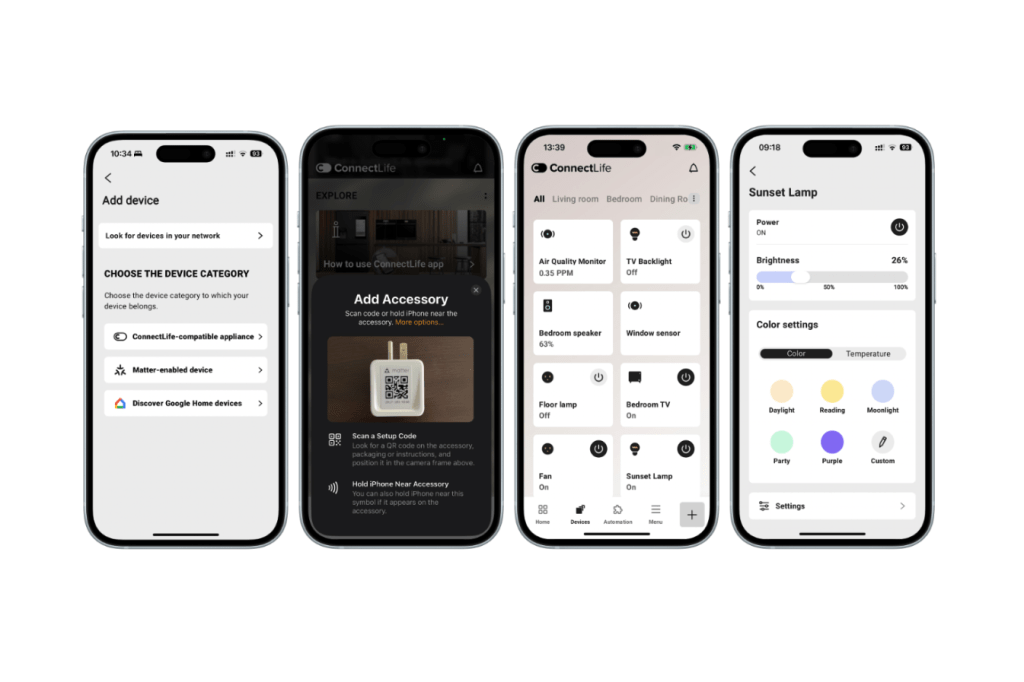The world of smart home technology is rapidly evolving, and Hisense is taking bold steps to ensure it remains relevant in the race for integration and automation. Despite a noticeable absence of major smart home announcements during Google’s recent I/O developers conference, Hisense has revealed plans to incorporate new Google Home APIs into its ConnectLife app. This integration will facilitate a seamless experience for users looking to incorporate various third-party smart devices into their homes.
Hisense’s Commitment to Smart Home Integration
Back in December 2024, Hisense made the initial announcement about opening its ConnectLife app to third-party products. Now, with the upcoming implementation of the latest Google Home APIs by fall 2025, users can look forward to a more cohesive smart home experience. This development is not just a minor update; it represents a significant shift in how consumers will interact with their smart appliances and devices. Hisense aims to create an ecosystem where different smart home products can work together effectively, which is crucial in a market where interoperability is becoming increasingly important.
Hisense’s spokesperson, Miguel Becerra, the Director of Smart Home Experiences for Hisense Americas, stated, “At Hisense, we are committed to simplifying smart living for everyone. This integration enhances ConnectLife to create seamless experiences that make everyday life more convenient and enjoyable for our consumers.” Becerra’s words highlight the company’s vision of not just having smart devices, but making them truly smart through interconnectedness and user-friendly controls.
The Technology Behind the Integration
One of the standout features of the new ConnectLife app will be its capability to support Matter-certified devices and those compatible with Google Home, marking a commitment to modern standards in smart home functionality. Matter is a universal connectivity protocol that aims to unify various smart home devices, allowing them to communicate with one another regardless of the manufacturer. This means consumers can mix and match devices from different brands without worrying about compatibility issues. According to a recent report by Statista, the smart home device market is projected to continue growing, with notable categories like smart security systems, smart lighting, and smart thermostats leading the charge.
Examples provided by Hisense illustrate practical use cases for this technology. Users will benefit from “one-touch modes” that allow for personalized automation, such as adjusting air conditioning units based on readings from air quality sensors produced by third-party manufacturers. Another example includes smart lighting that shifts colors or brightness levels in response to temperature alerts from the Hisense refrigerator’s VersaTemp drawer, ensuring drinks are always chilled to perfection without manual intervention. Such features would not only enhance convenience but also elevate the overall quality of life for users.
Market Reaction and Industry Implications
Hisense’s proactive move comes at a time when many consumers are demanding more from their smart home setups, wanting ease of use and better integration. Although Google’s I/O conference did not place a strong emphasis on smart home technologies, the silent rollout of new Google Home APIs indicates that industry giants are laying groundwork quietly. This allows companies like Hisense to innovate independently while aligning with larger tech ecosystems.
The integration of Google Home APIs into the Hisense ecosystem could potentially reposition the company in the competitive landscape of smart home appliances. By leveraging Google’s technology, Hisense not only enhances its product offerings but also gains access to a broader audience that is already embedded in the Google ecosystem. Additionally, the anticipated launch of the updated ConnectLife app on both Android and iOS platforms this fall is likely to further increase its visibility and user engagement across mobile devices.
The market response to similar integrations in the past indicates a positive trend. Companies like SmartThings and Amazon have seen successful adoption rates with their integrated ecosystems, due in part to their ability to connect with multiple brands and devices. Hisense’s strategic alignment with Google through the new APIs could lead to a similar trajectory, offering users a more unified and versatile smart home experience.
Conclusion
The forthcoming integration of Google Home APIs into Hisense’s ConnectLife app marks a significant development in the smart home landscape. With features designed to simplify and enhance the user experience, this initiative allows for greater interoperability among various smart devices. As consumers continue to seek convenience and efficiency in their smart home setups, Hisense’s innovations could not only boost its market standing but also reshape how smart homes operate as a whole.
Quick Reference Table
| Feature | Description |
|---|---|
| Integration | Support for Google Home APIs and Matter-certified devices. |
| User Experience | One-touch modes and customized automations. |
| Launch Date | Fall 2025 for Android and iOS. |
| Market Trend | Growing demand for smart home interoperability. |
| Company Vision | To simplify smart living for all consumers. |
| Industry Position | Aims to enhance competitiveness in the smart home sector. |

